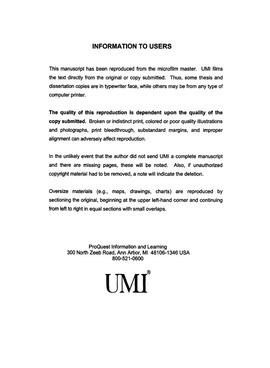| dc.contributor.advisor | Cox, Robert H., | en_US |
| dc.contributor.author | Kumar, Ashwani. | en_US |
| dc.date.accessioned | 2013-08-16T12:18:58Z | |
| dc.date.available | 2013-08-16T12:18:58Z | |
| dc.date.issued | 2003 | en_US |
| dc.identifier.uri | https://hdl.handle.net/11244/604 | |
| dc.description.abstract | Using the case study of private caste armies in Bihar, a state in eastern part of India, this dissertation attempts to describe and explain the dynamics of caste, class and state power in post-independence India. This study revolves around a fundamental question: what are the causes and outcomes of emergence and proliferation of private caste armies in Bihar? Using a process oriented state-in-society perspective, this dissertation attempts to analyze interactions between state power and social forces in Bihar. The state and society are embedded in each other rather than being dichotomously related. In contrast to usual portrayal of the state as a monolith and the central actor of social transformation, the empirical evidence from Bihar presents an alternative interpretation. The emergence of private caste senas (armies) has resulted from the ineffectiveness of state power and the increasing peasant unrest in the state of Bihar since independence. Further, the emergence of Ranvir Sena, a caste army of the landed Bhumihar caste, as the ruthless and dreaded community warriors in Bihar also points to the continuing influence of caste in structuring state-society outcomes in post-independence India. Evoking the spirit of selfless piety, Ranvir Sena claims to protect the caste as a community of merit and worth against the so-called depredations of lower castes (Dalits). In this sense, the frequent outbreak of caste wars between landowning castes and landless lower castes is not brought about by ancient caste hatred but by the modernity of caste wars rooted in the dynamics of political and agrarian struggles in post-independence India. In many places in Asia, Africa, and Latin America, militias, guerrillas, terrorists, vigilante groups, mafias, paramilitary groups have emerged and defined themselves in terms of ethnicity, language, region or religion. Seen as "irregular armed forces", they have often challenged state's monopoly of coercion. From a comparative perspective, the case of private caste armies in Bihar suggests that the seemingly endless cycle of violence in many societies is rooted in the limited and fragmented nature of the state power to mediate power struggles; part political and part economic. | en_US |
| dc.format.extent | xi, 322 leaves : | en_US |
| dc.subject | Caste India Bihar. | en_US |
| dc.subject | Ranvir Sena. | en_US |
| dc.subject | Political Science, General. | en_US |
| dc.subject | Peasant uprisings India Bihar. | en_US |
| dc.subject | Bihar (India) Politics and government. | en_US |
| dc.subject | Paramilitary forces India Bihar. | en_US |
| dc.subject | Bihar (India) Social conditions. | en_US |
| dc.title | Peasant unrest, community warriors and state power in India: The case of private caste senas (armies) in Bihar. | en_US |
| dc.type | Thesis | en_US |
| dc.thesis.degree | Ph.D. | en_US |
| dc.thesis.degreeDiscipline | Department of Political Science | en_US |
| dc.note | Major Professor: Robert H. Cox. | en_US |
| dc.note | Source: Dissertation Abstracts International, Volume: 64-03, Section: A, page: 1059. | en_US |
| ou.identifier | (UMI)AAI3082961 | en_US |
| ou.group | College of Arts and Sciences::Department of Political Science | |
